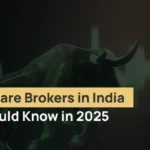
The American side hustle isn’t new. But the younger generations, especially Gen Z and Millennials, are approaching extra income by breaking all the old rules. Forget traditional babysitting, mowing lawns, or washing cars.
Today’s side hustles are creative, tech-savvy, value-driven, and built for sustainability. Let’s explore the key ways these generations are transforming what a side hustle looks like for young Americans.
Going Digital-First
Both Gen Z and Millennials grew up with the internet in their pockets. This comfort with technology has spawned new kinds of side hustles that can happen anytime, anywhere. Whether they’re creating TikTok content for brands, selling digital products on Etsy, or flipping thrifted items on Facebook Marketplace, these entrepreneurs embrace platforms that weren’t even around a decade ago.
More importantly, they understand algorithms. They leverage social media trends and tools like Canva, CapCut, AI writing assistants, and automated scheduling apps to scale up their income streams quickly – often without spending a dime on marketing. Even a simple side hustle like reselling clothes can grow into a recognizable brand with clever hashtags and influencer partnerships.
Prioritizing Values and Impact
While money is important, it’s not the only driver. Many Gen Z and Millennial hustlers look for gigs that align with their personal values. Sustainable fashion resellers on Poshmark and Depop cater to environmentally conscious consumers. Similarly, people who craft handmade items or design eco-friendly digital products highlight the purpose behind their work – and customers appreciate the transparency.
This generation cares about the “why” of their side hustle as much as the “what.” By choosing ethical practices and socially conscious messaging, they attract like-minded audiences who become loyal customers and even vocal brand ambassadors. That level of authenticity can be more powerful than traditional advertising.
Monetizing Skills and Knowledge
Both generations recognize that their personal skills and experiences can pay off – often digitally. They teach what they know by creating online courses, selling e-books, or launching podcasts and YouTube channels. Others offer specialized skills like virtual assistance, video editing, transcription, or social media management to small businesses and solo entrepreneurs.
And let’s not forget the rise of micro-consulting. Platforms like Fiverr, Upwork, and even direct Twitter DMs allow talented professionals including students and full-time workers to pick up quick gigs on their own schedule. Whether it’s writing blog posts, coding small websites, or creating TikTok ads, it’s never been easier for someone to monetize a skill they already have.
Turning Passion into Paychecks
Unlike past generations who may have treated side hustles as a second job, Millennials and Gen Z often blur the lines between work and play. Many are turning personal passions into revenue streams. Gamers monetize their streams on Twitch or YouTube. Artists sell fan art or commissioned pieces directly through Instagram. Travel lovers make affiliate income on TikTok and Instagram Reels. Even pet lovers offer dog walking and pet-sitting services that fit into their daily routines.
That direct-to-audience model is key: younger generations prefer cutting out middlemen and nurturing their own communities. Being authentic often translates into more engaged followers who trust them, and those followers tend to spend more.
Building Communities – Not Just Brands
Gen Z and Millennials know that community matters more than marketing hype. That’s why successful side hustlers spend time building relationships with their audiences. They jump into comments, respond to DMs, and listen to feedback. They embrace tools like Patreon, Substack, and Discord to offer exclusive perks to super-fans who want a deeper connection.
That personal touch is part of what keeps people engaged and paying. Even something as simple as a handwritten thank-you note in an Etsy order can turn a one-time buyer into a loyal repeat customer. Younger hustlers realize the long-term power of relationships and play the long game.
Prioritizing Flexibility and Balance
More than ever, these generations want control over their time. Side hustles offer a flexible way to make extra income without sacrificing work-life balance. Whether someone is using a rideshare app between classes, creating digital stickers for Etsy after work, or answering micro-surveys on Prolific during their commute, the goal is often freedom – not burnout.
That means new kinds of gigs that fit into pockets of downtime. Pet-sitting through Rover, renting out a car on Turo, or creating UGC (user-generated content) for brands all provide ways to earn money in small windows of time. That flexibility is built into the very DNA of their hustle culture.
Reinvesting and Growing
Perhaps the most striking difference between Gen Z and Millennials and earlier side hustlers? These younger entrepreneurs don’t necessarily see their gigs as stopgaps – they see them as seeds for something bigger. Many put extra money back into their hustle, upgrading equipment, investing in marketing, or learning new tools. Some eventually transition their side hustle into a full-time career or company that can scale.
That entrepreneurial mindset is part of what keeps the new side-hustle culture fresh and future-focused. It’s not just about earning cash; it’s about testing ideas, making connections, and crafting a more independent lifestyle.
The Bottom Line
Today’s side hustles look nothing like the past. Powered by tech, driven by authenticity, and focused on balance and impact, Gen Z and Millennials are showing that making extra money can also mean making a meaningful life. Whether they’re running virtual shops, teaching skills online, or creating a thriving TikTok channel, they’re redefining success – one hustle at a time.

Professional Branding Strategy Services: Why Your Brand Needs More Than a Logo

The Rise of Modern Payment Platforms: What to Try This Year

How Advanced Freight Broker Software Shapes a Profitable, Productive Supply Chain

AI in Marketing Is No Longer a Buzzword — It’s the Strategy

Srinivasa Rao Challa Champions AI-Powered Financial Systems for a Smarter, Safer Economy

THCA Pre-Rolls: The Convenient, Legal High You’ve Been Waiting For

How Gen-Z and Millennials Are Reinventing the Side Hustle

Is Book Scanning Legal? What You Need to Know Before Digitizing Books








